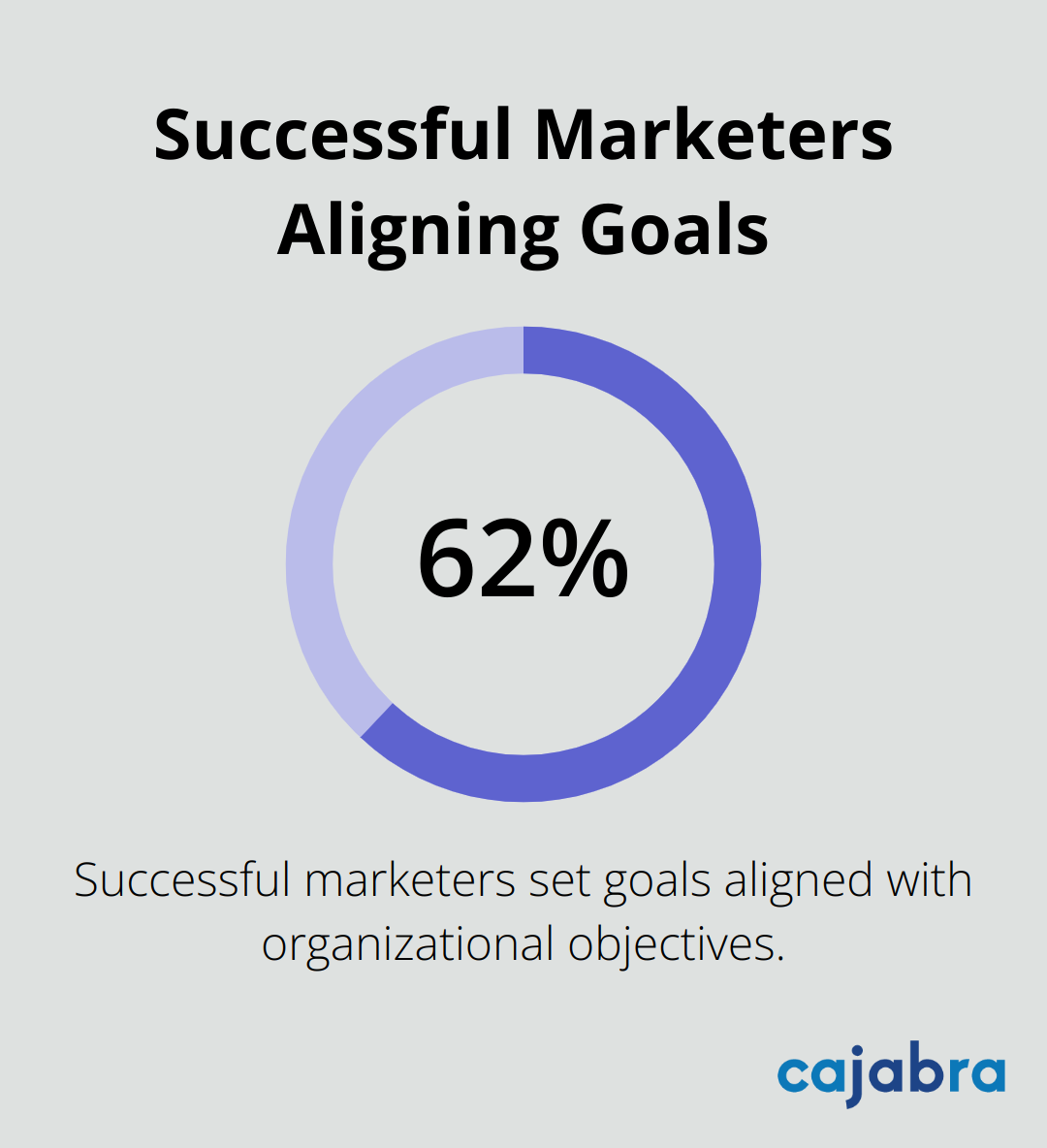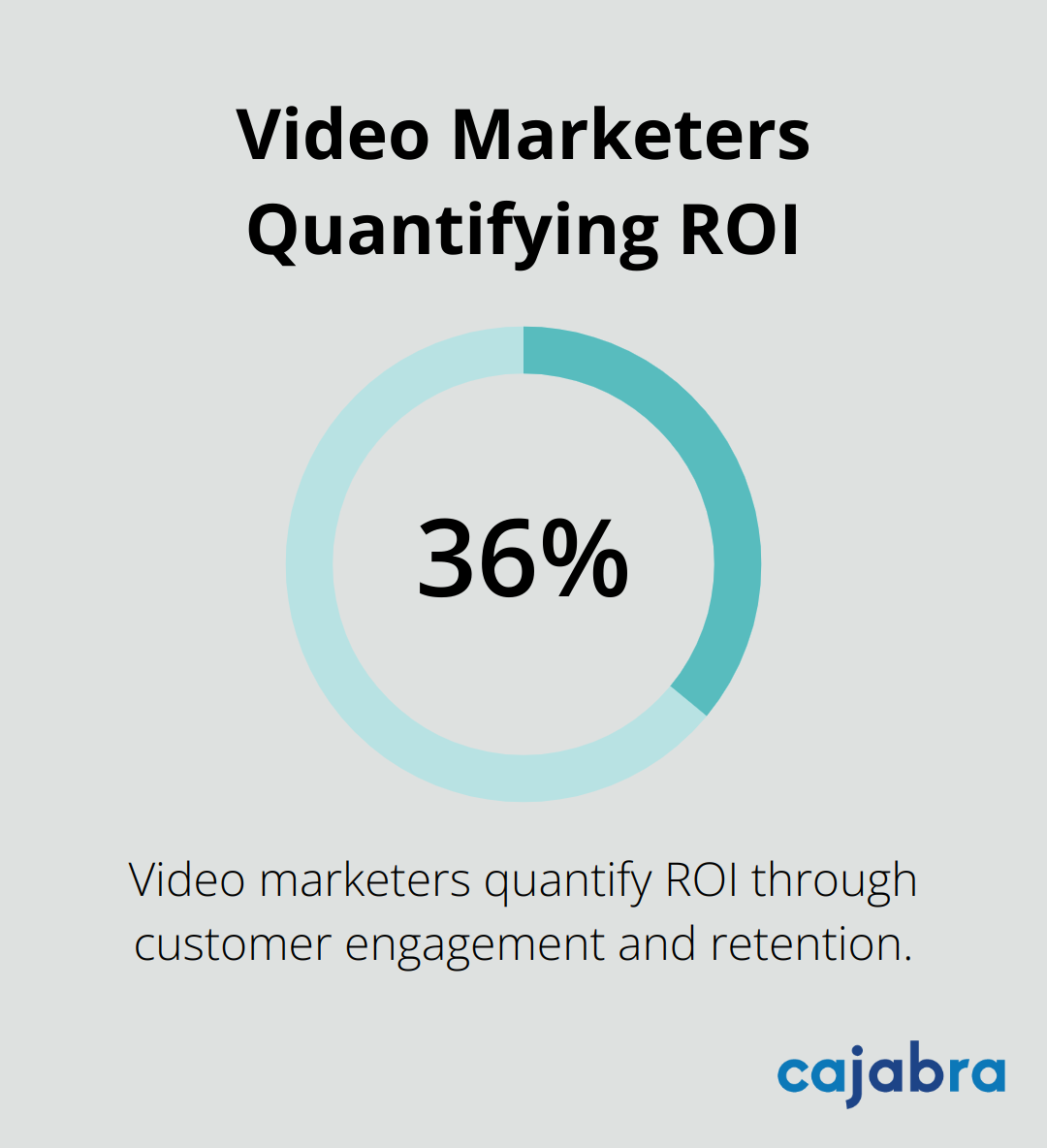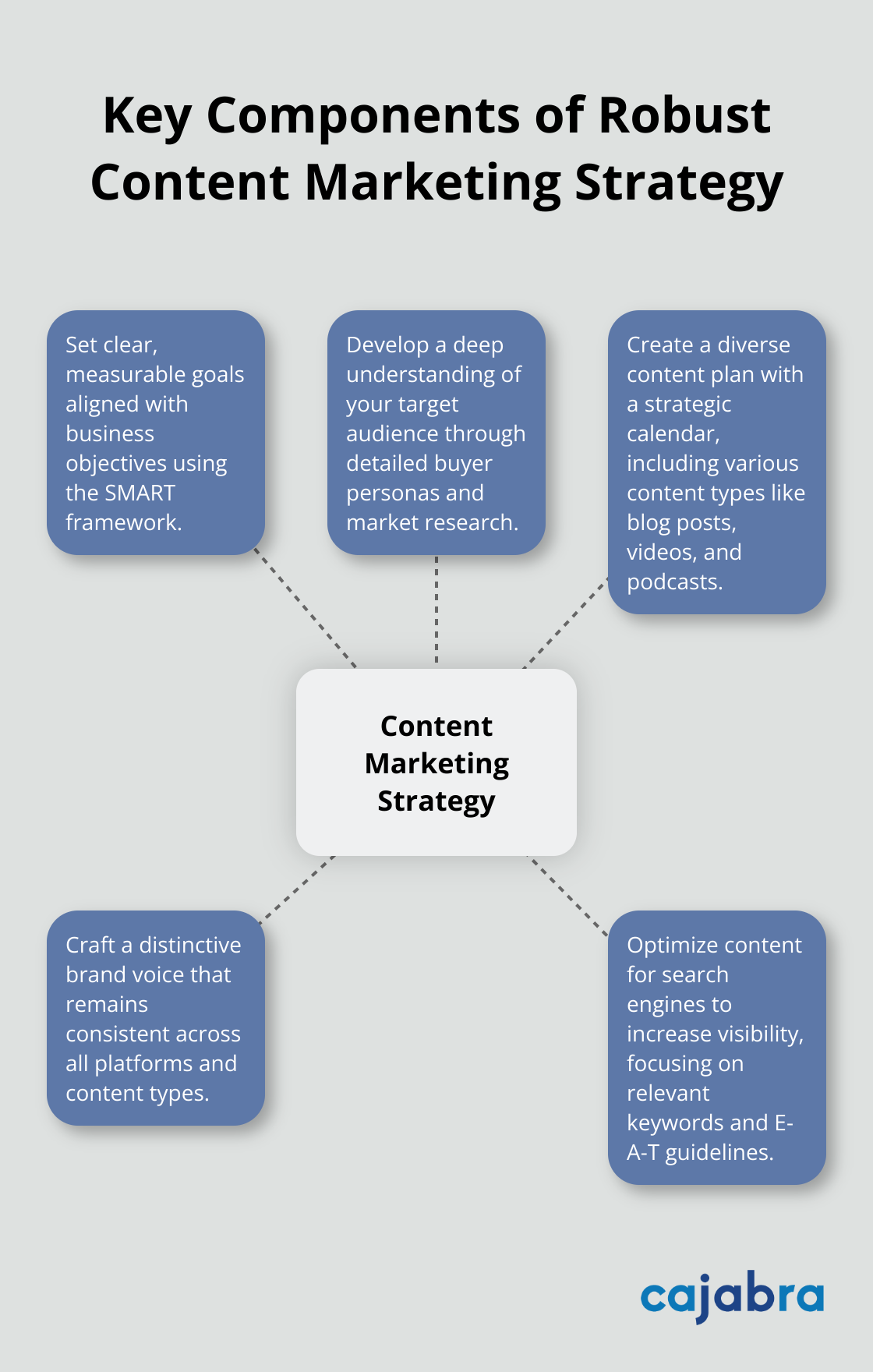
Content marketing is the backbone of modern digital strategies. At Cajabra, LLC, we've seen firsthand how the best of content marketing can transform businesses.
A well-crafted content marketing strategy drives traffic, engages audiences, and boosts conversions. This guide will show you how to create a powerful strategy that delivers results.
Effective content marketing starts with clear goals that support your overall business objectives. If your company aims to increase market share, your content strategy should focus on brand awareness and lead generation. The Content Marketing Institute reports that 62% of successful marketers set goals that align with their organization's objectives.

Use the SMART framework to define your content marketing goals:
Specific: "Increase website traffic by 50%" trumps "Get more visitors."Measurable: Utilize tools like Google Analytics to track progress.Achievable: Set ambitious yet realistic targets based on your resources.Relevant: Ensure goals contribute to your business's bottom line.Time-bound: Establish deadlines (e.g., "within the next quarter").
Research indicates that successful goal achievement has a positive impact on future effort.
Selecting appropriate Key Performance Indicators (KPIs) is vital to track your content marketing success. Essential KPIs include:
Regular monitoring allows for timely strategy adjustments.
Your goals should evolve as your business grows. Revisit and refine them quarterly to maintain relevance and challenge. Clear, measurable goals and the right KPIs will create a content marketing strategy that drives real business results.
As you define your content marketing goals, the next step is to understand your target audience deeply. This knowledge will shape your content creation and distribution strategies, ensuring your efforts resonate with the right people.
Your content marketing success hinges on a deep understanding of your target audience. Start by creating comprehensive buyer personas. These semi-fictional representations of your ideal customers stem from market research and real data about your existing clients. Include demographics, behavior patterns, motivations, and goals. For instance, a buyer persona for an accounting firm might be "Small Business Owner Sarah," aged 35-45, who struggles with cash flow management and seeks proactive financial advice.
To build these personas, collect data from your CRM, conduct client interviews, and analyze social media insights. The more detailed your personas, the better you can tailor your content to address their specific pain points and aspirations.
Don't rely on assumptions. Conduct thorough market research to validate your personas and uncover new insights. Use a mix of quantitative and qualitative methods:
A study reveals that 44.4% of marketers leveraging interactive content report a mildly or very successful strategy compared to 39.9% of those who don't invest in it. This statistic underscores the importance of research-backed audience understanding.
Your existing customer data is a goldmine of insights. Examine your analytics to understand:
Tools like Google Analytics can reveal user behavior on your website, while email marketing platforms offer insights into open rates and click-through rates. Use this data to refine your content strategy and distribution tactics.
Audience understanding is an ongoing process. Make it a habit to update your personas and research regularly (at least quarterly) to stay aligned with evolving customer needs and market trends. This practice ensures your content remains relevant and impactful.
As you gain a deeper understanding of your target audience, you'll be well-equipped to develop a content plan that resonates with them. Let's explore how to create a strategic content plan in the next section.
Select a mix of content types that resonate with your audience. Blog posts remain a staple, but their usage among content marketers has changed. Videos are increasingly popular, with 36% of video marketers quantifying ROI through customer engagement and retention. Podcasts are another growing medium, with 41% of Americans listening to podcasts monthly.

For accounting firms, we recommend a blend of educational blog posts, explainer videos for complex topics, and podcasts featuring industry insights. This variety caters to different learning styles and consumption preferences.
A content calendar serves as your roadmap to consistent publishing. Use tools like Trello or Asana to plan your content in advance. Try to include a mix of timely and evergreen content. For instance, plan tax-related content leading up to tax season, but also include perennial topics like financial planning tips.
HubSpot's research shows that companies that publish 16+ blog posts per month get 3.5 times more traffic than those publishing 0-4 monthly posts. While this frequency might not be feasible for everyone, it underscores the importance of regular, planned content.
Your brand voice is the personality behind your content. It should remain consistent across all platforms and content types. For accounting firms, we often recommend a voice that's professional yet approachable, authoritative but not condescending.
Develop a style guide that outlines your brand voice, including tone, vocabulary, and even grammar preferences. This guide ensures consistency, especially if you have multiple content creators.
Implement a robust content creation and approval process. This typically involves:
Tools like Workflow can help manage this process efficiently. A streamlined process leads to more consistent, high-quality content.
SEO is essential for content visibility. Incorporate relevant keywords naturally into your content. Use tools like SEMrush or Ahrefs to identify high-value keywords in your industry. For accounting firms, this might include terms like "tax planning strategies" or "small business accounting tips."
Focus on creating comprehensive, authoritative content. Google's E-A-T (Expertise, Authoritativeness, Trustworthiness) guidelines are particularly relevant for financial content. Showcase your expertise through in-depth articles and case studies.
Creating a robust content marketing strategy is essential for modern businesses. Clear goals, audience understanding, and a comprehensive content plan form the foundation for success. The best content marketing results from careful planning, execution, and ongoing refinement.

Your strategy must adapt to the rapidly evolving digital landscape. Regular evaluation of performance against KPIs will help you pivot when necessary. Experimentation with new content formats and distribution channels is crucial to stay ahead in the industry.
Cajabra's specialized services, including the JAB System™, help accountants secure retainer-based clients and establish industry leadership. Explore how Cajabra can support your content marketing journey and drive real results for your accounting firm (we've seen firsthand how effective strategies transform businesses). The path may challenge you, but increased visibility, engaged audiences, and business growth make it worthwhile.



